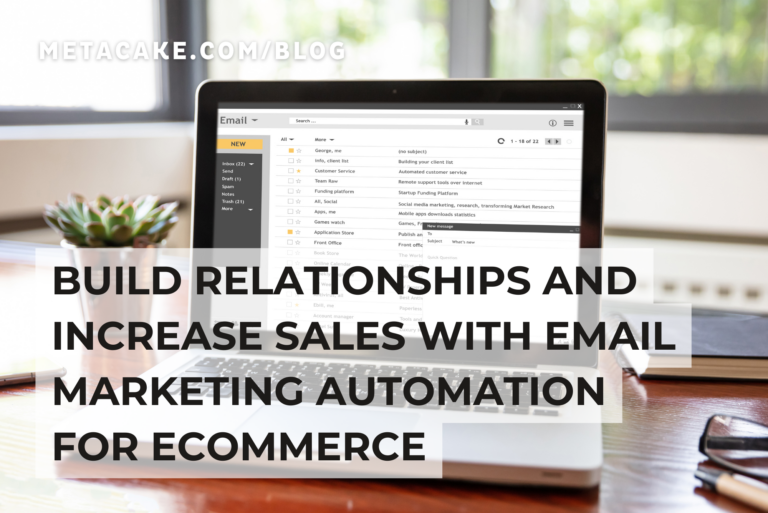Are you using email automation?
If you’re not, you should be. And even if you already have some automated email campaigns in action, you probably need even more.
Don’t believe us? Check out these statistics:
Compared to scheduled email campaigns, automated messages performed better across all metrics.
- The open rate improved by 83.4%.
- The click rate increased by 341.1%.
- The conversion rate rose by 2270%.
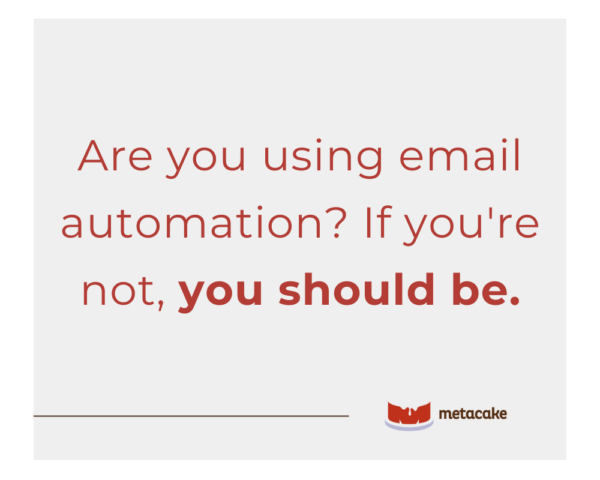
One of every three people who click on an automated email goes on to make a purchase. So, as you can see, email marketing automation can deliver a lot of value for your ecommerce store. And not only that, but it saves you a bunch of time! Talk about a win-win.
In this article, we’ll go over the top eight automated email campaigns your ecommerce store simply must have and give you some tips to think about when approaching your automated email strategy.
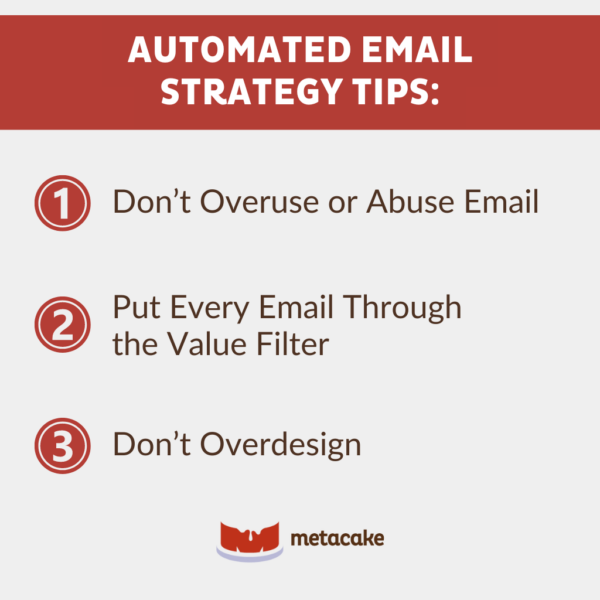
Tips for Your Automated Email Strategy
Don’t Overuse or Abuse Email
Believe it or not, you aren’t the most important thing to others.
Overactive email strategies will lose people, so consider how frequently your audience will want to hear from you before going crazy with email automation.
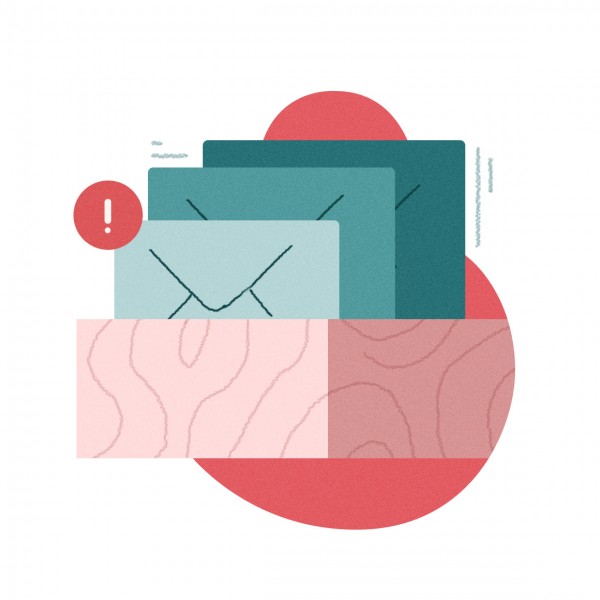
Put Every Email Through the Value Filter
Every email must provide information that’s useful to the recipient. Before sending an email, thoroughly evaluate your content and the segment of your audience you’ll be sending it to.
Similar to overusing your email, sending emails that aren’t relevant or provide no value to individuals is a surefire way to get an influx of unsubscribes.

Don’t Overdesign
Your emails must be presentable, professional, and consistent with your brand.
Keep in mind that functionality is essential and the majority of emails are viewed on mobile devices, so keep them basic and tidy.
It’s a good idea to keep up to date with mobile ecommerce best practices.
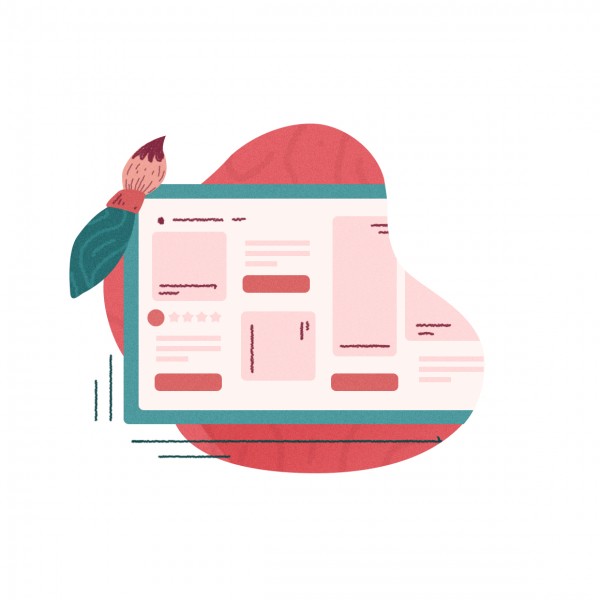
PRO TIP: Test other methods of communication for your email automation where possible (for example, Facebook Messenger). Each Facebook user has an email address that delivers messages directly to their Facebook Messenger. This typically has an incredibly high response rate compared with traditional emails.
Automated Email Campaigns Your Ecommerce Store Needs
1. Abandoned Cart
The number one automated email campaign that you must be running is abandoned cart follow-up. This is the lowest-hanging fruit in the ecommerce game.
Just think about it. If a visitor abandons their cart, that means that they’ve progressed all of the way through your funnel. They selected products with care, went to the cart to review their order, and then proceeded to checkout and input at least some of the information.
And then they went cold. Sure, it’s possible that these customers had a change of heart and no longer want your product. But more likely than not, they just need a little nudge to finish the rest of the checkout.
These visitors are much easier to push over the conversion edge than someone new starting out at the beginning of the funnel.
So follow up with them! And not just once.
To follow up with cart abandoners, we recommend sending three emails at different intervals. Send the first email one hour after the cart is abandoned, the second after 24 hours, and the third after 72 hours.
To sweeten the deal and close the sale, consider inserting a promotional offer in the second or third email. It’s amazing what a 10% discount can do.
2. Pre-Purchase
We call this nurturing. If someone subscribed to your email list, for whatever reason, it’s safe to say they have an interest in your product or your brand.
So for goodness’ sake, give the people what they want!
But that doesn’t mean an endless stream of offers and promotions. (Remember the value filter?) Don’t smother your new email subscribers!
Instead, use your emails for education. Provide useful information about your products and areas of expertise, and present offers gradually. Begin with a soft offer, then mix it into important content pieces before following up with a hard push in the second or third email.
Like any relationship that lasts, you have to start slow. First, you must provide value. Then (and only then) can you ask for something in return (such as a purchase). It’s all about give and take.
3. Post-Purchase
Congratulations! You’ve successfully created a customer out of a visitor.
Now what?
Well, first, let’s talk about what not to do. Don’t leave your new customer high and dry. You might think you’ve achieved your goal of making the sale, but this is only the beginning.
Now, it’s time to continue providing value. Send them useful content about how to use your product and improve their experience. You have the opportunity here to not only increase your customer’s lifetime value, making sale after sale, but also to turn your new customer into a loyal fan and brand advocate.
Every ecommerce store should have a post-purchase series to continue to surprise and delight their customers. But it’s especially important for SaaS or subscription-based businesses where this continued communication and value will make or break the business.
4. Referral
Give your customers an incentive to share your brand with their network.
Sure, it would be nice if they just shared your brand out of their sheer love and admiration for it. And maybe at times they will. But people are busy, and as we said before, you aren’t the most important thing in your customers’ lives.
So make it worth their while to refer your brand.
Offers are the name of the game. Give them a great offer to share with their friends, and reward them when a friend purchases.
Note: Make sure your customers feel good about the offer they’re sharing with their friends. It should be a no-brainer. They should feel like they’re giving their friends a great deal — a gift even!
A good example of this is Naked Wines. They provide an offer to share with friends that you simply can’t refuse.
Did someone say $100 of free wine? Sign me up!
It’s through these referrals that they built their entire business and became the wine powerhouse that they are today. What offer can you make that people won’t be able to refuse?
Of course, whatever offer you make needs to make sense for your business economically speaking, but get creative! And go beyond the standard 10% off discount.
5. Order Confirmation
Certainly you already have an automated order confirmation email. But are you using it to its fullest potential?
Order confirmation emails are statistically one of the most highly opened and viewed emails (70% open rate compared to bulk emails).
So, if that’s the case, why not use it to sell? Do more with your order confirmation email by adding upsells, offers and promotions, and review requests.
6. Customer Service Follow-Up
People like to give feedback — or at the very least, they like to have the opportunity to give feedback. So give them a chance!
The key here is to provide a place for people to air their complaints (or post their praises!). People want an outlet, and if you don’t provide one for them, they’ll find their own way to tell you what they think — somewhere that you don’t control.
So make sure to request feedback in an automated email to make sure that your customers feel heard.
7. Review Request
Verified customer reviews on your ecommerce store are incredibly important (and there are great platforms out there to help do this for you). Social proof often means the difference between a sale and a site exit.
So, follow up with every customer once they receive their order to request a review. The key is to request the review at the right time. You need to wait until the customer’s product has arrived and they’ve had a chance to use it, but you also need to catch them when the product is fresh in their mind.
Think about how your customers use your product, and test the right timing for your business to follow up for a review. We recommend using a trigger based on delivery. Track your shipments, and once they’re delivered, set your review request email to be sent out shortly after.
8. Refill Reminder
Last but not least, set up an automated email to remind your customers to purchase again when their products are running out.
While this doesn’t apply to every ecommerce business, if you have a product that’s consumable or depletes over time, reminding your customers to purchase again when they’re just about to run out (and providing them a discount to do so) is a great way to make another sale.
Use some simple intelligence to determine average usage rates and reach out proactively when a customer is running low.
Consider offering them a recurring subscription plan so they don’t even have to think about ordering again in the future.
Email Marketing Automation for Ecommerce: Final Thoughts
If you implement these eight automated email marketing campaigns, you’ll build stronger relationships with your customers and increase your sales by delivering timely and relevant messages.
So, it’s time to get to work!
Check out this article on our favorite Shopify apps to help you get your email automation under control.
If you still need a little extra help, we’re always here. Reach out today and speak to one of our expert team members.
